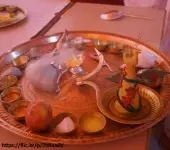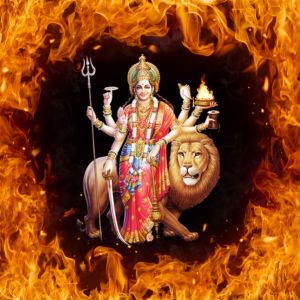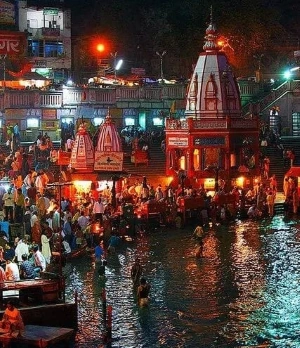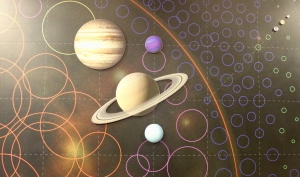Dhanishta Nakshatra

The nakshatra which spreads from 23 degrees 20 minutes of Makara Rashi to 6 degrees 40 minutes of Kumbha Rashi is called Dhanishta (धनिष्ठा). This is the 23rd nakshatra in Vedic Astronomy. In Modern Astronomy, Dhanishta corresponds to α Sualocin to δ Delphini.
Characteristics
Traits of those born in Dhanishta Nakshatra are:
Common to both Rashis
- Wealthy
- Charitable
- Aggressive
- Greedy
- Sharp minded
- Ambitious
- Ignore health
- Making money is the priority in life
- Independent-minded
- Skillful at work
- Religious
- Selfish
- Lack of loyalty
- Self-confidence
- Capability to keep secrets
- Family-oriented
- Vengeful
- Rigid
Only for Dhanishta Nakshatra Makara Rashi
- Alert
- Active
- Adventurous
- Influential
Only for Dhanishta Nakshatra Kumbha Rashi
- Sociable
- Quick-witted
- Inquisitive
- Short-tempered
Mantra
ॐ वसुभ्यो नमः
Om vasubhyo namah'
Click below to listen to Dhanishta Nakshatra Mantra
Unfavorable Nakshatras
- Purva Bhadrapada
- Revati
- Bharani
- Dhanishta Makara Rashi - Magha, Purva Phalguni, Uttara Phalguni Simha Rashi
- Dhanishta Kumbha Rashi - Uttara Phalguni Kanya Rashi, Hasta, Chitra Kanya Rashi
Those born in Dhanishta Nakshatra should avoid important events on these days and also avoid partnership with those belonging to these Nakshatras.
Health issues
Those born in Dhanishta Nakshatra are prone to these health issues:
Dhanishta Makara Rashi
- Leg injury
- Boils
- Hiccups
- Nausea
Dhanishta Kumbha Rashi
- Leg injury
- Blood disorders
- Palpitations
- Fainting
- Heart diseases
- Blood pressure
- Varicose
Suitable career
Some of the suitable careers for those born in Dhanishta Nakshatra are:
Dhanishta Nakshatra Makara Rashi
- Doctor
- Mining
- Geology
- Engineer
- Labour department
- Rehabilitation
- Prison officer
- Manufacturing
- Equipment
- Spare parts
- Cement
- Minerals
- Glass
- Alcohol
- Jute
Dhanishta Nakshatra Kumbha Rashi
- T.V.
- Phone
- Electricity
- Nuclear Science
- Research
- Courier
- Printing
- Investigation
- Farming
- Silk
- Jute Industry
- Mining
- Iron & Steel
- Leather
- Police
- Defense service
- Rescue
Can Dhanishta Nakshatra wear diamond?
Yes
Lucky stone
Coral
Favorable colors
Red, black, dark blue
Names for Dhanishta Nakshatra
The starting letter of the name as per Avakahadadi system for Dhanishta Nakshatra is:
- First charana - गा (Ga)
- Second charana - गी (Gi)
- Third charana - गू (Gu)
- Fourth charana - गे (Ge)
These letters can be used for the traditional Nakshatra name kept at the time of the naming ceremony.
In some communities, the names of the grandparents are kept during the naming ceremony. There is no harm in following that system.
Shastra prescribes that the official name kept for records and all practical purposes should be different from this. It is called Vyavaharika nama. The Nakshatra name as per the above system should be known only to close family members.
Letters that you should avoid in the official name for those born in Dhanishta Nakshatra are -
- Dhanishta Nakshatra Makara Rashi - स, ओ, औ, ट ठ, ड, ढ (sa, o, au, t'a t'ha, d'a, d'ha)
- Dhanishta Nakshatra Kumbha Rashi - ए, ऐ, ह, अं, क्ष, त, थ, द, ध, न (e, ai, ha, am, ksha, ta, tha, da, dha, na)
Marriage
Marriage will be prosperous. Women born in Dhanishta Nakshatra may face difficulties
Remedies
Periods of Budha, Guru/Brihaspati, and Shukra are generally unfavorable for those born in Dhanishta Nakshatra. They may perform the following remedies.
- Perform Mangala/Angaraka/Kuja Shanti Homa
- Perform Shani Shanti Homa
- Listen to this Mangala/Kuja Mantra every day
- Listen to this Shani Mantra every day
Dhanishta Nakshatra
- Lord - Vasus
- Ruling planet - Mangala/Kuja
- Animal - Man
- Tree - Ghaf (Prosopis spicigera)
- Bird - Peacock
- Bhuta - Akasha
- Gana - Manushya
- Yoni - Lion (Female)
- Nadi - Madhya
- Symbol - Drum
Recommended for you
Abraham Pandithar

Learn about the Carnatic musicologist he endeavored to link ancient Tamil literature to Carnatic music.....
Click here to know more..Durga Saptashati - Chapter 9

om raajovaacha . vichitramidamaakhyaatam bhagavan bhavataa mama . devyaashcharitamaahaatmyam raktabeejavadhaashritam . bhooyashchechchhaamyaham shr....
Click here to know more..Yamuna Ashtakam

मुरारिकायकालिमाललामवारिधारिणी तृणीकृतत्रिविष्टपा त्�....
Click here to know more..
English Topics
Astrology
Click on any topic to open
- 93 Is it a Good Day for You Tomorrow?
- 92 What Is Kari Naal?
- 91 Revati Nakshatra Famous Personalities
- 90 Uttara Bhadrapada Nakshatra Famous Personalities
- 79 Purvabhadra Nakshatra Famous Personalities
- 78 Satabhisha Nakshatra Famous Personalities
- 77 Dhanishta Nakshatra Famous Personalities
- 76 Shravana Nakshatra Famous Personalities
- 75 Uttarashada Nakshatra Famous Personalities
- 74 Purvashada Nakshatra Famous Personalities
Please wait while the audio list loads..
30
Ganapathy
Shiva
Hanuman
Devi
Vishnu Sahasranama
Mahabharatam
Practical Wisdom
Yoga Vasishta
Vedas
Rituals
Rare Topics
Devi Mahatmyam
Glory of Venkatesha
Shani Mahatmya
Story of Sri Yantra
Rudram Explained
Atharva Sheersha
Sri Suktam
Kathopanishad
Ramayana
Mystique
Mantra Shastra
Bharat Matha
Bhagavatam
Astrology
Temples
Spiritual books
Purana Stories
Festivals
Sages and Saints

